What happens during an elbow replacement surgery?
Replacement surgery is usually not considered until it has become impossible to control your symptoms without surgery. If replacement becomes necessary, it can be a very effective way to take away the pain of arthritis and to regain use of your elbow.
Before we describe the procedure, let's look first at the artificial elbow itself.
The Artificial Elbow
There is more than one kind of artificial elbow joint (also called a prosthesis). The most common types are like a hinge.
Each prosthesis has two parts. The humeral component replaces the lower end of the humerus in the upper arm. The humeral component has a long stem that anchors it into the hollow center of the humerus. The ulnar component replaces the upper end of the ulna in the lower arm. The ulnar component has a shorter metal stem that anchors it into the hollow center of the ulna.
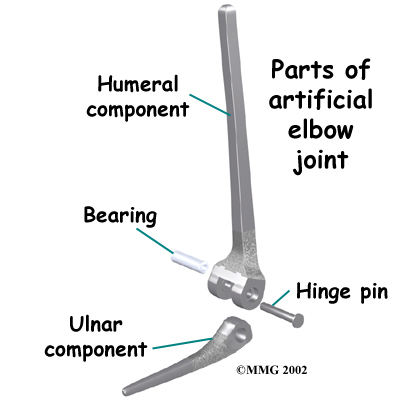
The hinge between the two components is made of metal and plastic. The plastic part of the hinge is tough and slick. It allows the two pieces of the new joint to glide easily against each other as you move your elbow. The hinge allows the elbow to bend and straighten smoothly.
There are two different ways to hold the artificial elbow in place. A uses a special type of epoxy cement to glue it to the bone. The has a fine mesh of holes on the surface. Over time, the bone grows into the mesh, anchoring the prosthesis to the bone.
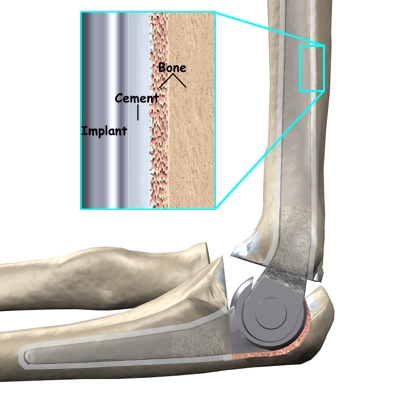
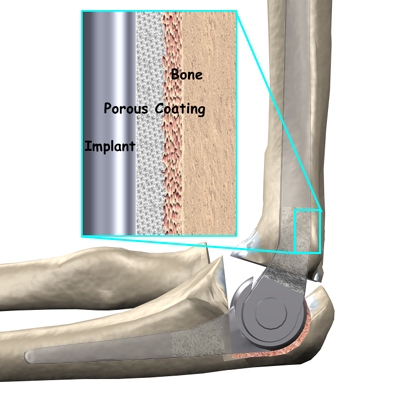
The Operation
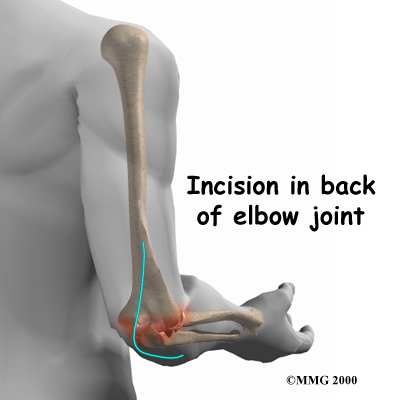
Most elbow replacement surgeries are done under general anesthesia. General anesthesia puts you to sleep. In some cases surgery is done with regional anesthesia, which deadens only the nerves of the arm. If you use regional anesthesia, you may also get medications to help you drift off to sleep, so you are not aware of the surgery.
After the anesthesia, the surgeon makes an in the back of the elbow joint. The incision is made on the back side because most of the blood vessels and nerves are on the inside of the elbow. Entering from the back side helps prevent damage to them.
The tendons and ligaments are then moved out of the way. Care must be taken to move the ulnar nerve, which runs along the elbow to the hand.
Once the joint is exposed, the first step is to remove the joint surfaces of the ulna and the radius. This is usually done with a surgical saw. The surgeon then uses a special rasp to hollow out the marrow space within the ulna to hold the metal stem of the ulnar component. The ulnar component is then to test the fit. If necessary, the surgeon will use the rasp to reshape the hole in the ulna.
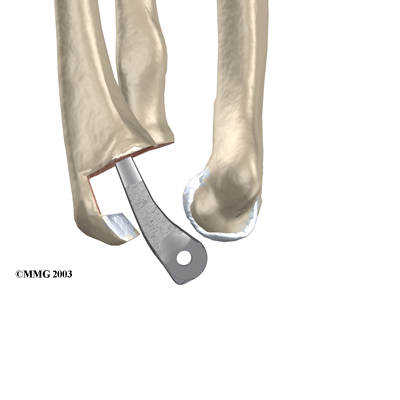
When the ulnar component has been fitted correctly, the surgeon repeats the procedure on the .
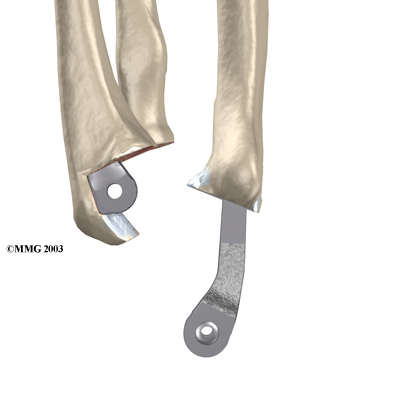
After the humeral component has been fitted, the surgeon puts together the pieces of the implant and checks to see if the hinge is working correctly. The implant is then removed, and the bone is prepared to cement it in place. The pieces are cemented in place and put together. After another check for proper fit and motion, the surgeon sews up the incision.
Your elbow will probably be placed in a bulky dressing and splint. You will then be awakened and taken to the recovery room.
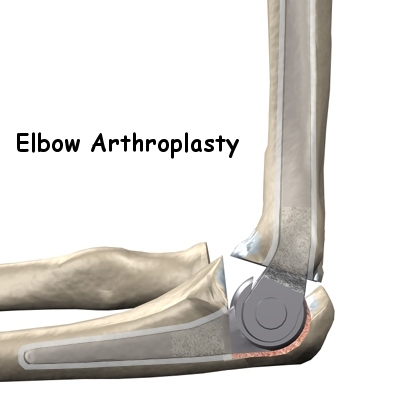
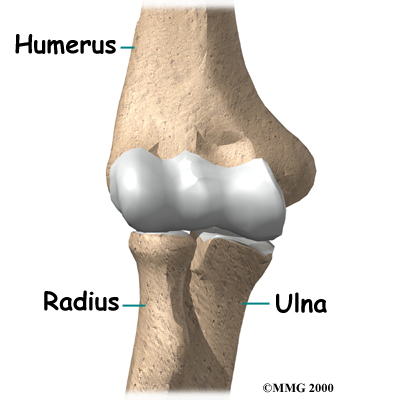 How does the elbow joint work?
How does the elbow joint work?




